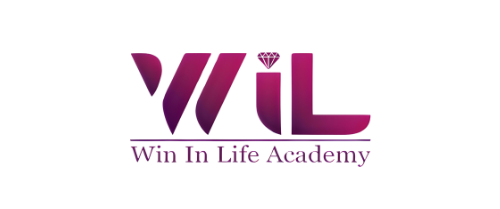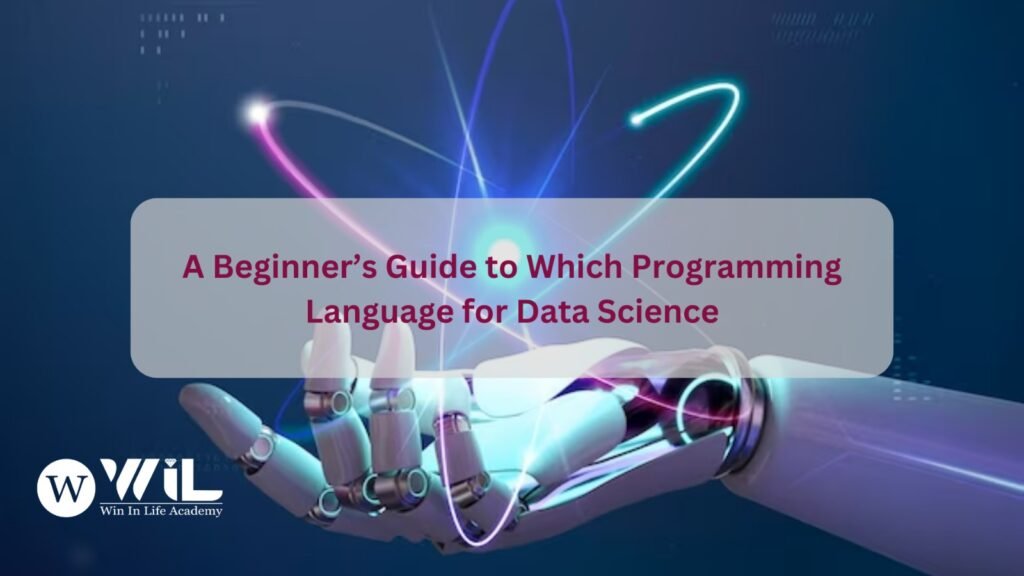Data science is one of the most exciting and rewarding fields in the modern world. It involves collecting, analyzing, and interpreting large amounts of data to gain insights and solve problems. Data science can be applied to various domains such as business, health, education, social media, and more. How do you become a data scientist? What techniques and tools do you need to master? One of the most important decisions you have to make is choosing which programming language is used for data science.
A programming language is a set of rules and instructions that allow you to communicate with a computer and create software applications. Many programming languages are available, each with its strengths and weaknesses. Some are more suitable for data science than others, depending on your goals, preferences, and background.

In this blog, we will explore some of the most popular and useful programming languages for data science and help you decide which one is best for you.
Finding the best data science language for your goals
Before we dive in, finding what programming language is best for data science, there are a few questions you’ll want to ask yourself to narrow down your options:

- What is your current level of programming experience? If you are a beginner, you might want to start with a language that is easy to learn and has a lot of resources and support. If you are an experienced programmer, you might want to choose a language that is fast, powerful, and has advanced features.
- What kind of data are you familiar with? Different types of data may require various tools and techniques. For example, suppose you will work with structured data (such as tables or databases). In that case, you might use a language with built-in support for querying and manipulating data. Suppose you will work with unstructured data (such as text or images). In that case, you might want to use a language with libraries and frameworks for natural language processing or computer vision.
- What data science problems do you want to solve? Different types of issues may require different approaches and methods. For example, which language is used in data science? If you wish to perform descriptive or inferential statistics, you might want to use a language with packages and functions for statistical analysis. If you build predictive models or machine learning algorithms, you might want to use a language with libraries and frameworks for machine learning or deep learning.
Popular data science languages to choose from
Check out the following list of most popular data science languages to see what they offer and how they compare:

SQL
SQL stands for Structured Query Language, which is the most important language for data science. It is a domain-specific language that is used to interact with relational databases. SQL allows you to create, read, update, and delete data from tables using queries. SQL is essential for data science because it enables you to easily access and manipulate large amounts of structured data efficiently and easily.
Some of the advantages of SQL are:
- It is widely used and supported by many database management systems such as MySQL, PostgreSQL, Oracle, SQL Server, etc.
- It is easy to learn and use which language is used in data science. SQL has a simple syntax and follows a logical structure.
- It is powerful and flexible. SQL can perform complex operations on data, such as joining, filtering, aggregating, sorting, etc.
Some of the disadvantages of SQL are:
- It is not a general-purpose language. SQL can only be used for working with relational databases. It cannot be used for tasks like data visualization or machine learning.
- It could be more expressive and elegant. SQL can be lengthy and repetitive. It does not support features such as functions or variables.
Python
Python is one of the most popular and widely used programming languages for data science. It is a general-purpose, high-level, and interpreted language emphasizing readability and simplicity, so we discuss which Programming Language is Used for Data Science here. Python has rich libraries and frameworks that make data analysis, visualization, and machine learning easy and efficient.
Some of the advantages of Python are:
- It is easy to learn and use. Python has a simple and clear syntax that follows the “readability counts” principle which language is used in data science. It also has a large and active community of developers and users who provide support and resources.
- It is versatile and powerful. Python can be used for various purposes, such as web development, scripting, automation, testing, etc. It also supports multiple programming paradigms such as object-oriented, functional, procedural, etc.
- It is compatible and portable. Python can run on any platform that supports the Python interpreter, such as Windows, Linux, Mac OS, etc. It also has a built-in module system that allows you to import and use code from other sources.
Some of the disadvantages of Python are:
It is slow and memory-intensive. Python is an interpreted language that executes code line by line at runtime. It makes running time slower than compiled languages such as C or Java. It also uses dynamic typing and garbage collection, which consume more memory and CPU resources.
- It is not suitable for low-level programming for data science which language required. Python does not have direct access to hardware or memory management. It also does not support features such as pointers or multiple inheritances, making it difficult to use Python for low-level tasks such as system programming or embedded systems.
- It has some design limitations. Python has some drawbacks in its design, which is the most important language for data science such as the global interpreter lock (GIL), which prevents multiple threads from running simultaneously.
- It also needs some consistency in its syntax, such as the indentation rule or the use of self in methods.
R
R is one of the specialized programming languages for graphics and statistical computing. Statisticians for statisticians created it, which is the answer to which programming language is used for data science. R has some features that make it ideal for data science, such as:
- CRAN: It is a comprehensive repository of packages that cover various aspects of data science
- RStudio: It is an integrated development environment (IDE) that makes coding in R easier and more productive
- ggplot2: It is a library for data visualization
- Shiny: It is a framework that creates interactive web applications
Some of the advantages of R are:
- It is free and open source. R can be downloaded and used without any cost or license. It also has a large and active community of developers and users who contribute to its development and provide support and resources.
- It is powerful and expressive. R can perform complex operations on data such as subsetting, filtering, aggregating, transforming, etc. which is the most important language for data science. It also supports vectorization, functional programming, metaprogramming, etc.
- It is domain-specific and specially designed for data visualization and statistical analysis. It has built-in functions and packages for various statistical methods such as regression, classification, clustering, hypothesis testing, etc.
Some of the disadvantages of R are:
- It is slow and memory-intensive. R is an interpreted language that executes code line by line at runtime, making it slower than compiled languages which is the most important language for data science such as C or Java. It also uses copy-on-modify semantics and garbage collection, which consume more memory and CPU resources.
- It is not suitable for general-purpose programming. R could improve handling tasks like web development, scripting, automation, testing, etc.
Its design has drawbacks, such as the scoping rule or the need for more data structures, such as dictionaries or sets.
- It has a steep learning curve. R has a unique and sometimes inconsistent syntax that can confuse beginners. It also has a lot of quirks and exceptions that can cause errors or unexpected results.
Conclusion
Choosing a programming language for data science is a challenging task. Each language has advantages and disadvantages; the best choice depends on your goals, preferences, and background. However, these are some guidelines that help you make better decisions. These are:
- You can start with a language that is easy to use, such as SQL or Python.
- These languages have a lot of support with resources that will help you get started progressively. You can learn one language and then expand your skills.
- Learning which programming language is used for data science is the answer: different languages will help you complement each other and allow you to handle various problems and data.
- It would be helpful to you when you keep learning and experimenting with new tools and languages.
Data science is a kind of dynamic and evolving field that requires constant learning and adaptation. You should always be open to new possibilities and opportunities that can enhance your data science career. We hope this blog has given you useful insights and tips on choosing the best programming language for data science. Remember, there is no perfect answer, only your best answer.






I loved you even more than you’ll say here. The picture is nice and your writing is stylish, but you read it quickly. I think you should give it another chance soon. I’ll likely do that again and again if you keep this walk safe.
Vitazen Keto I like the efforts you have put in this, regards for all the great content.
Usually I do not read article on blogs however I would like to say that this writeup very compelled me to take a look at and do so Your writing taste has been amazed me Thanks quite nice post
I like your writing very much. We keep up a correspondence extra approximately your post on AOL. I need an expert in this space to unravel my problem. May be that is you. Looking forward to seeing you.
Hello there!
I’m so glad you enjoyed my writing. I’m always looking for ways to connect with others who share my interests.
Looking forward to hearing from you!
Aakash Jha
Email: aakash@clinilaunchresearch.in
For the reason that the admin of this site is working, no uncertainty very quickly it will be renowned, due to its quality contents.
That’s a great observation! A well-maintained website with high-quality content is a recipe for success. The dedication and effort put into creating valuable content can definitely contribute to a site’s growth and popularity. Is there anything specific you’d like to discuss about this website or its content? I’m happy to provide more information or offer suggestions based on your interests.